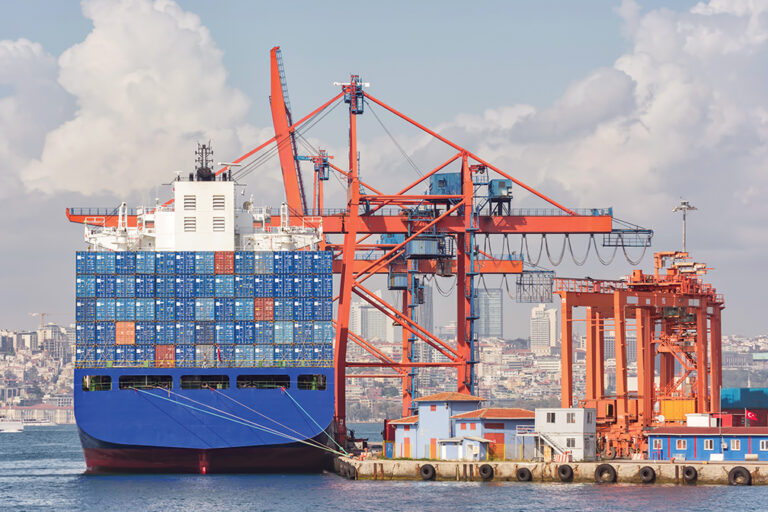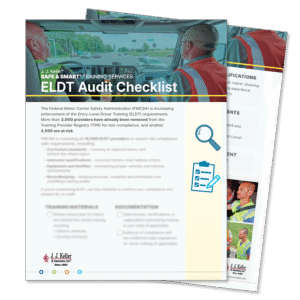If you’re planning to give some lavish gifts during the holidays this year, the good news is you’ll have more money to spend. Freight rates remain near record levels in many lanes.
The bad news? You’d better shop early, because the products you want may not be available when you want to buy.
For July, the American Trucking Associations (ATA) reported a decline of 1.2% in its seasonally adjusted For-Hire Trucking Index. The drop follows a 2% decline in June.
The ATA index compares freight volumes reported by its membership with data from year 2015. The July index of 109.8 indicates that freight volumes in the month were 9.8% higher than they were during the same time period in 2015.
Bob Costello, ATA’s chief economist, spread the blame in an Aug. 24 release, saying, “Not only are there broader supply chain issues, like semiconductors, holding tonnage back, but there are also industry-specific difficulties, including the driver shortage and lack of equipment.”
Costello was lamenting that the economy, poised to rebound from COVID restrictions, is held back by shortages of semiconductors and other products and supplies. The impact is multiplied for the trucking industry because lower production means there’s less freight to haul. The production of new trucks, necessary to replace outdated equipment, is also reduced.
So, while manufacturing is held back from full production, there is still more freight to haul than available trucks to haul it, keeping rates at high levels.
ACT Research’s August “Commercial Vehicle Digest” reported that the U.S. economy is strong — but so are the constraints that are holding up production.
“US GDP growth is projected at 6.2% this year and next,” said Kenny Vieth, president and senior analyst at ACT. “That bullish outlook is predicated on solid freight metrics and consumers who continue to spend at relatively higher rates on goods, as well as millennial demographics, record savings and wealth, and pent-up housing demand that all bode well for continued strength in freight-related economic activity.”
Production of new Class 8 trucks is currently backed up well into 2022, with about an 18-month waiting period for a new truck ordered today.
A shortage of drivers is currently a hot topic in trucking media, too. Carriers are having difficulty hiring enough drivers to keep their trucks rolling, and the problem is reflected in their financial statements. Driver pay and working conditions are often cited as issues that are holding up the hiring of more drivers.
However, for the increasing number of owner-operators, an available truck with a driver is a good thing to have available in the current freight market.
Production isn’t the only thing that’s holding up the market. The U.S. imports a huge amount of cargo from the far-East, especially China. Like trucking, the cargo ship industry is having capacity issues of its own.
An Aug. 18 article by University of Plymouth lecturer Stavros Karamperidis on TheConversation.com pointed out that China has eight of the Top 10 busiest shipping ports in the world, and that none of them are running near normal capacity due to COVID restrictions.
“From Shanghai to Hong Kong to Xiamen, ships are in long queues to unload,” Karamperidis explained. “The U.S. west coast is also seeing bad congestion, with many ships anchored in California’s San Pedro Bay, awaiting access to the ports of Los Angeles and Long Beach.”
These ports are having more difficulty now than they did in 2020, when COVID was more widespread.
“Now that many countries have vaccinated large numbers of people and their economies are reopening, demand has bounced back with a vengeance, and ports are not coping well,” Karamperidis noted.
Additionally, weather events have caused the closing of some ports.
One result is that, just as in trucking, cargo ship rates have shot upward. Karamperidis claimed that the rate for moving one 40-foot container from China to a port in Europe is currently running about 10 times the normal rate.
Another intermodal issue that could have an impact is the availability of chassis to haul containers once they’re unloaded from ships. Chinese company CIMC, accused of dumping chassis on the U.S. market, was sued by a coalition of five U.S. manufacturers for unfair trade practices. The verdict was a 221% duty imposed on CIMC imports for the next five years, more than tripling their price.
That’s good for U.S. manufacturers, but time will be needed for those companies to build enough chassis to make up for the loss of the Chinese chassis, creating a short-term chassis shortage. Some West Coast carriers have resorted to unloading inbound containers, reloading the freight onto dry van trailers for inland shipment. The increased need for truck capacity will help keep freight rates high.
The Cass Freight Index for Shipments reported a 3.1% drop in freight levels for July, but levels were still 15.6% higher than July 2020. While the amount of freight was up 15.6%, the amount paid to haul it was up 43.1%, an indication of how rates have improved over the past year.
According to the Cass report, much of the decline in freight volumes came from the railroad and less-than-truckload markets. The Cass report measures shipping volumes in multiple transportation modes, including ship, air, rail, pipeline and barge, in addition to trucking.
The Cass report mentioned difficulty in getting both trucks and drivers as factors in the trucking statistics but also pointed to the effect of the government stimulus dollars wearing off as time passes.
On the truckload side, Cass reported that volumes fell 0.8% from June levels.
Tim Denoyer, ACT’s vice president and senior analyst who writes for Cass Info, said, “Freight demand fundamentals remain strong, based on a cash-flush U.S. consumer balance sheet, tight inventories, and an industrial sector struggling to grow into record orders with fiscal stimulus likely on the way.”
At some point, shortages of parts such as semiconductors will be alleviated and production of product, and the trucks to haul it, will increase — if the resurgence of COVID doesn’t shut everything down again. For now, the times are still good for trucking.
Cliff Abbott is an experienced commercial vehicle driver and owner-operator who still holds a CDL in his home state of Alabama. In nearly 40 years in trucking, he’s been an instructor and trainer and has managed safety and recruiting operations for several carriers. Having never lost his love of the road, Cliff has written a book and hundreds of songs and has been writing for The Trucker for more than a decade.














